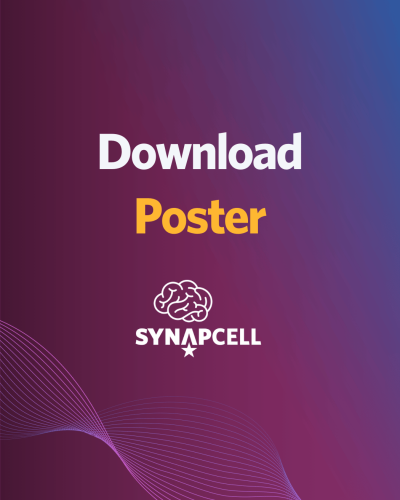What is GammaPark?
Home » Resources / Blog / Preclinical Parkinson & Diskynesia - GammaPark
GammaPark is a translational EEG Biomarker for L-DOPA induced Dyskinesia, in a Parkinson’s disease (PD) context. Dopamine agonists lower BetaPark and increase GammaPark expression at the same time. Anti-PD strategies with EEG aim at lowering BetaPark (Parkinsonism signature), while silencing GammaPark, after L-DOPA priming.
L-DOPA-induced Dyskinesia (LID) are motor side-effects affecting PD patients chronically-treated with this dopamine replacement drug. Since LID are associated with aberrant Gamma cortical synchrony (GammaPark), efficacy of compounds on LID can be assessed with this EEG biomarker.
Breaking it down:
Parkinson’s disease (PD) is a neurodegenerative disorder affecting the motor system. This disease is characterized by a loss of neurons in the ventral part of the substantia nigra pars compacta [1, 2]. The main symptoms can be motor and non-motor [3]. The four cardinal motor symptoms are tremor, hypokinesia (slowness of movement), rigidity and postural instability [4].
In this neurodegenerative disorder, motor dysfunctions are thought to be related to an imbalance between antikinetic beta band (13-30 Hz) rhythms and prokinetic gamma band (60-90 Hz) rhythms in the motor network.
Chronic treatment with the standard of care dopamine-replacement drug L-DOPA suppresses antikinetic beta band rhythms (BetaPark) while promoting cortical oscillations in the gamma frequency band (GammaPark), that are associated to L-DOPA induced dyskinesia. GammaPark is a prefect biomarker for the investigation of therapeutical strategies against Dyskinesia.
Derisk Prokinetic Effect in Parkinson's Disease with GammaPark EEG Biomarker and Evaluate Add-on Therapies at the Source!
Over the years, two EEG biomarkers have been identified in patients suffering from PD. The main oscillatory activity identified in the cortico-basal ganglia loop is a frequency band around 30 Hz, a pathological activity correlated with symptoms such as hypokinesia and rigidity [5, 6]. Treatments with dopaminergic drugs and deep brain stimulation can reduce this pathological oscillation and are associated with an improvement in symptoms [5]. However, After an initial “honeymoon” period when the standard dopamine replacement drug L-DOPA almost completely reversed the signs and symptoms of PD, the treatment starts losing its effectiveness [6] and induces motor complications, also called L-DOPA-induced Dyskinesia (LID).
Excessive cortical EEG Gamma oscillations have also clearly been identified in patients with PD during chronic dopaminergic treatment. This resonant oscillatory activity has been correlated with abnormal involuntary movements (LID) [8].
In animal models of PD, and more specifically in the unilateral 6-OHDA-lesioned rat, similar pathological EEG oscillations have been identified [9]. In these freely-moving animals, a strong cortical beta activity has indeed been characterized. Importantly, injection of dopaminergic drugs in these animals significantly reduced this cortical beta band (BetaPark), in association with contralateral rotations [8].
Halje et al. [10] also identified resonant cortical oscillations in the Gamma frequency range after chronic treatment with L-DOPA, which aligns with the clinical literature. These Gamma oscillations were found to be minimally affected by voluntary movements while their presence proved to be a reliable biomarker of L-DOPA-induced Dyskinesia.
In particular, excessive cortical EEG Gamma oscillations induced by chronic L-DOPA treatment in the 6-OHDA rat model can be viewed as a proxy for the cortico-basal ganglia loop dysfunction mentionned above which underlies LID.
At SynapCell, over 2 years of R&D led to the the full characterization and validation of both cortical pathological oscillations using the translational unilateral 6-OHDA-lesioned rat model.
BetaPark, the predictive EEG biomarker for Parkinson syndrome and GammaPark , which ranges between 75 and 110 Hz, appears in association with dyskinesia, when animals are treated with chronic L-DOPA notably.
It therefore becomes possible to evaluate the effect of chronic administrations of investigational compounds on protecting against the chronic effects of L-DOPA in the 6-OHDA model, and quantify the impact on GammaPark power and on Dyskinesia with Abnormal Involuntary Movements (AIMs) scoring.
Head to our Parkinson’s Page for a deeper look on BetaPark, L-DOPA induced GammaPark* and contact us to dig into the data!
- Obeso, J.A., et al., The basal ganglia in Parkinson’s disease: current concepts and unexplained observations. Ann Neurol, 2008. 64 Suppl 2: p. S30-46.
- Obeso, J.A., et al., Functional organization of the basal ganglia: therapeutic implications for Parkinson’s disease. Mov Disord, 2008. 23 Suppl 3: p. S548-59.
- Charvin, D., et al., Therapeutic strategies for Parkinson disease: beyond dopaminergic drugs. Nat Rev Drug Discov, 2018. 17(11): p. 804-822.
- Beitz, J.M., Parkinson’s disease: a review. Front Biosci (Schol Ed), 2014. 6: p. 65-74.
- Hammond, C., H. Bergman, and P. Brown, Pathological synchronization in Parkinson’s disease: networks, models and treatments. Trends Neurosci, 2007. 30(7): p. 357-64.
- Holford and Nutt, Disease progression, drug action and Parkinson’s disease : Why time cannot be ignored. Eur J Clin Pharmacol, 2008.
- Little, S., et al., beta band stability over time correlates with Parkinsonian rigidity and bradykinesia. Exp Neurol, 2012. 236(2): p. 383-8.
- Oswal, A., P. Brown, and V. Litvak, Synchronized neural oscillations and the pathophysiology of Parkinson’s disease. Curr Opin Neurol, 2013. 26(6): p. 662-70.
- Vorobyov, V.V., et al., EEG modifications in the cortex and striatum after dopaminergic priming in the 6-hydroxydopamine rat model of Parkinson’s disease. Brain Res, 2003. 972(1-2): p. 177-85.
- Halje, P., et al., Levodopa-induced dyskinesia is strongly associated with resonant cortical oscillations. J Neurosci, 2012. 32(47): p. 16541-51.
Download our Poster to Learn More!
Improving Drug Discovery in Parkinson's Disease Using Brain Oscillations as Translational Biomarkers
In this Poster, we investigate the use of aberrant cortical oscillations as translational biomarkers for Parkinson’s Disease Drug development and evaluate the effect of acute (L-Dopa, Apomorphine) and chronic (L-Dopa) treatments on both EEG oscillations and Abnormal Involuntary Movements (AIMs) in the 6-OHDA model.

